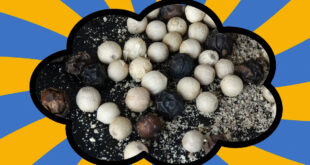Every day, we come across so much information that makes us realize how little we truly know. Between animals, weather, different cultures, food, politics, and history, there is so much to learn. If you are bored, or simply want to impress someone, use this list of facts you have never heard before. Here are 15 mind-blowing facts that might make you rethink how much you think you know.
1. Spending just a few months in Antarctica can shrink your brain.

Traveling to the Arctic is a dream for millions around the world and only a handful of scientists and explorers fulfill this dream every year. If you ever do get a chance, make sure to socialize and find some stimulating ways to keep yourself busy. A study published in the New England Journal of Medicine in Dec. 2019 explains that eight polar expeditioners had their brain imaging taken before and after 14 months of isolation. The results showed that the “volume of the hippocampal dentate gyrus was lower than that in controls.” Researchers believe that “the changes in the brain they observed are the result of … environmental monotony and prolonged isolation.”
2. A giant octopus is capable of squeezing itself through a hole.

Octopuses are extremely intelligent creatures and have an amazing ability to squeeze through tiny crevices, cracks and holes. The video below was taken by Bermuda Institute of Ocean Studies student Raymond Deckel, who was investigating just how small a hole they can fit through as well as how long it takes them to squeeze through different sizes of holes.
So, how are they able to make these kind of escapes? It turns out, octopuses have no bones or outer shells. Their high intelligence also plays a major role and in laboratory experiments, scientists were able to train them to distinguish between different shapes and patterns.
3. Saudi Arabia buys camels and sand from Australia.

It might come as a surprise to learn that Saudi Arabia, the vast desert land, imports camels and sand from another country. This is because camels are also part of the diet in the country. Saudis need to import Australian camels for meat production and Australia’s garnet sand is also largely exported to the country because of its unique properties ideal for sandblasting. This technique is used to pressure-clean building surfaces.
4. If sound waves could travel through space, the sun burning would be as loud as 10,000 Earths covered in police sirens.

It’s a good thing we can’t hear space activity from Earth. According to heliophysicist Craig DeForest, of the Southwest Research Institute’s Department of Space Studies, the sun would be absolutely deafening. While the sun appears smooth and calm from Earth, it is actually a maelstrom of superheated plasma. There are about a million of convection cells of superheated gas rising and falling constantly across its surface at any given time, each about the size of Texas.
Each of these cells emits about 100 to 300 watts of sound energy per square meter, or about the same as a police siren. And because the sun’s surface area is around 10,000 times larger than Earth: “Imagine 10,000 Earths covered in police sirens, all screaming,” he says. Thankfully, the Earth is around 92 million miles from the sun, so the sound would be somewhat attenuated by the time it got here. So, according to him, during the day, it would be as loud as the speakers at a rock concert and during the night, it would fade enough to where we would be able to hold conversations.
5. Aluminum was once more valuable than gold.

Aluminum is literally one of the most common elements on Earth. There however, was a period when the metal cost more than gold. Although aluminum makes up about 8% of the Earth’s crust, it has never been known to occur in its metallic form anywhere on Earth. Instead, it appears as a chemical compound across the globe. So, during the 1800’s, when a scientist figured out how to get some flakes, people loved the color and shine of this new metal; causing it to become more expensive than gold.
6. Sloths can hold their breath longer than dolphins.

Both sloths and dolphins have the amazing ability to hold their breaths for long periods of time by slowing down their digestion and heart rate. Dolphins are capable of using this technique to hold their breaths for as long as 10 minutes underwater whereas sloths can hold their breath for over 20 minutes – some have even reported up to 40.
7. When sheep are sheared, it causes them to fight with each other.

The sheep is an incredible animal capable of recognizing up to 50 other sheep faces for as long as two years. However, if they are sheared, the lack of fur causes them to not recognize each other and start fights for a few days to re-establish dominance.
8. The heaviest organism in the world is an aspen grove.

The largest organism in the world named Pando, Latin for I spread, is 1,000’s of years old and is a massive grove of quaking aspens. According to Forbes, “aspens have the unique ability to produce genetically identical offspring through offshoots from their root system. This is exactly what happened in Richfield, Utah, where a grove of 47,000 aspens all originate from a single male parent aspen, sharing an identical genetic makeup.” In total, the grove of aspens cover 106 acres.
9. The Ethiopian calendar is seven years behind the rest of the world.

Unlike the rest of the world, things are done a little differently in Ethiopia. While most countries around the world follow the Gregorian calendar, the African nation uses its own. Because of this, Ethiopia is actually around seven years behind the rest of the world.
10. There are computers for the Amish, which have no internet, videos, or music.

The Amish are more willing to adopt new technology if they can justify it for business reasons and as long as they can keep it out of their home. Also, the key selling point of the computers used by the Amish is all the things the computer doesn’t do. That is, the computer doesn’t have any ability to connect to the internet, play any videos or music. The only thing the computers can be used for is business and only business.
11. Clams have feet.

That’s right. Clams have a muscular “foot”, controlled by two muscles, the anterior and posterior foot muscles. Clams control their movement using their foot as well as to burrow into the sand to submerge itself safely out of harm’s way. So, while it might look like clams have a big tongue that sometimes protrudes from their shell, what you’re actually seeing is a foot.
12. If all of the water on Earth fell as rain at once, the entire planet would get 1 inch of precipitation.

About 71 percent of the Earth’s surface is covered in water and the oceans hold about 96.5 percent of all Earth’s water. Water also exists in the air as water vapor, in rivers and lakes, in icecaps and glaciers. However, if all of that water happened to evaporate and then come falling down back to Earth, the entire planet would get 1 inch of rain.
13. Stars don’t really twinkle.

We grew up learning “Twinkle, Twinkle Little Star”, which lead us to believe that the massive celestial bodies we see at night are sparkling. This is in fact incorrect or merely a “space mirage” since stars emit steady and constant light. The reason why we observe them as flashing is due to the interference caused by Earth’s atmosphere, making them in turn appear as if they are twinkling.
14. There’s a Starbucks specifically operating for CIA agents and it’s location is top-secret.

Like everyone else, CIA agents also need their daily dose of caffeine. According to The Washington Post, it’s listed as Store Number 1 on receipts and is the world’s most top-secret Starbucks since its location is unknown. The baristas who are employed there have to go through extensive and rigorous interviews and background checks. The Washington Post also notes that in order for the baristas to go out for breaks, they have to be escorted by agency “minders.” Also, the names of CIA agents are not written on cups unlike everywhere else.
15. The process of creating a single jelly bean takes up to two weeks.

According to Jelly Belly, one of the biggest manufacturers of jelly beans, it can take anywhere between 7 to 14 days to create a single jelly bean. Think about that next time you decide to toss the flavor you don’t like.




